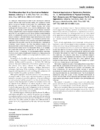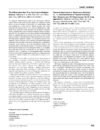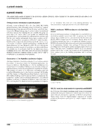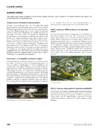issue contents
September 2003 issue
Includes papers presented at the XIV Russian Synchrotron Radiation Conference SR2002
Novosibirsk, Russia, 15-19 July 2002

Cover illustration: Evolution of an explosion (projective image), see Aulchenko, Papushev, Ponomarev, Shekhtman and Zhulanov, pages 361-365. The horizontal scale is the position and the vertical scale is the time passed since detonation. The detonation wave is at the bottom of the figure. The image was produced at VEPP-3 (Novosibirsk) with the DIMEX detector.
facility information
SR2002 conference
Commissioning and status of the high-power free-electron laser of the Siberian Center are briefly described.
The scientific potential of an energy-recovery linac (ERL) source of X-rays is enormous; however, a prototype low-energy ERL must first be built to resolve significant accelerator physics issues.
Phases of the DELSY (Dubna Electron Synchrotron) project, under development at the Joint Institute for Nuclear Research in Russia, are described.
The infrared Mark-III FEL is a useful tool for human surgery. A theoretical analysis is presented, indicating that the wavelength 6.45 µm has the most accessible range of superpulse parameters that enable this surgical application.
Multilayer X-ray mirrors based on different pairs of materials with periods from 0.8 nm to 3.5 nm have been fabricated and investigated. Current results of measurements for different spectral regions are reported.
The paper describes a prototype of a one-coordinate detector for the imaging of explosions.
Based on temperature-dependent EXAFS studies of high-temperature superconducting oxides, a model of the relationship between the local crystal and the local electronic structures has been proposed. In a common approach the model explains the antiferromagnetic state, metal–insulator phase transition and the appearance of superconductivity, and eliminates the discrepancy between neutron-scattering and EXAFS data.
In this work the trace-element analysis of human hair was carried out by the SRXRF and TXRF methods. It has been shown that the distributions of the trace elements on the head area are not identical.
Point defects can induce `forbidden' Bragg reflections in the resonant region near absorption edges.
EXAFS and XANES spectroscopy methods have been applied in a study of the influence of the preparation conditions on the spatial and electronic structure of Ge/Si heterostructures.
New kinetics data have been obtained for a Ni + Al self-propagating high-temperature synthesis using a graphite monochromator and a two-dimensional DED-5 gas detector.
research papers
Elemental and structural analyses of mummy hairs from Ancient Egypt using complementary synchrotron X-ray and infrared microfocus techniques are described.
In a tooth of the sea urchin Lytechinus variegatus, synchrotron X-ray phase microradiography followed by confocal-light microscopy and by synchrotron X-ray absorption micro-computed tomography revealed a previously unsuspected pair of parallel rows of channels in the keel.
X-ray scattering data have been recorded from protein solutions to 2.2 Å spacing using the BioCAT insertion-device beamline at the Advanced Photon Source. The measured scattering is in agreement with that predicted using the program CRYSOL and atomic coordinates from the PDB. Features in the patterns can be used to assess both the structural integrity of the protein and the extent of radiation-induced damage.
book reviews
Free 

Free 

current events
Free 

Free 

Free 

Free 



 journal menu
journal menu













































